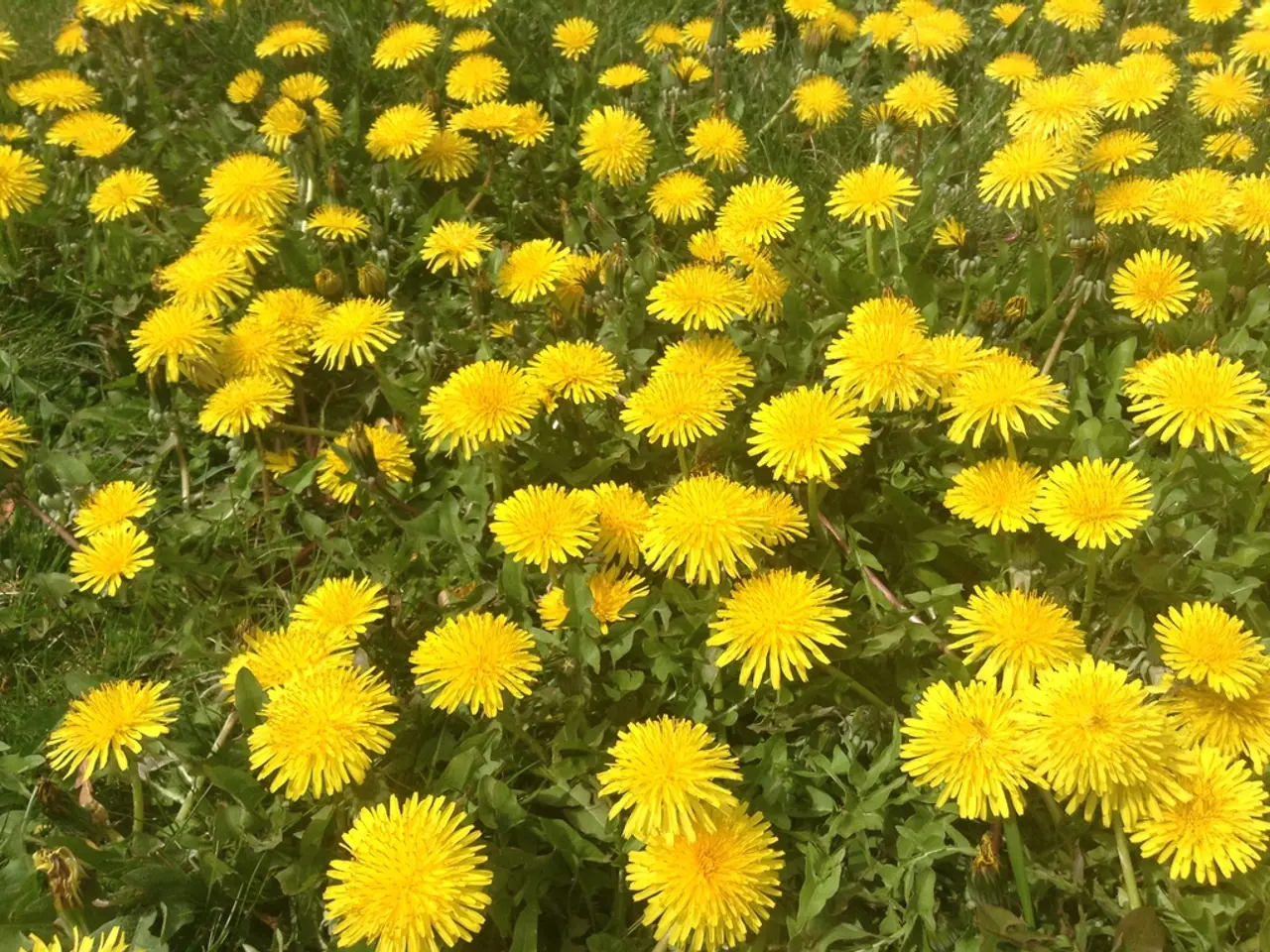Brilliant Blooms of Forsythia: A Sunny Addition to Your Garden, Perfect for Inexperienced Horticulturists
Forsythias are a delightful addition to any garden, offering a burst of colour and life during the spring months. These hardy shrubs, members of the olive family (Oleaceae), are known for their resilience, with pests and diseases rarely causing them trouble.
Originating from climates with hotter summers than ours, forsythias have adapted well to survive cold winters. They flourish abundantly in a Continental climate and are even planted along motorways in northern Italy and parts of Switzerland.
Forsythias prefer a sunny position and soil that is not waterlogged. Regular watering, especially in dry spells, promotes healthy growth. The shrubs can tolerate a range of conditions if amended with organic matter.
There are several common species and cultivars to choose from, each with its unique characteristics. Forsythia x intermedia, the most widely grown garden hybrid, is robust with a mature height of 8–10 feet, and features prolific yellow blooms in early spring. 'Lynwood Gold' is an exceptional choice, with an upright growth habit, reliable profuse yellow flowers, and a mature height of 6–10 feet, making it highly recommended for most garden settings in zones 5–8.
For smaller gardens or tight spaces, 'Karl Sax' is a compact cultivar, growing to about 2–3 feet tall and wide, while 'Show Off' Sugar Baby® is a miniature cultivar, reaching only about 18–24 inches tall and wide. These compact options are perfect for foundation plantings, containers, or low border plants.
Forsythia suspensa, also known as the Weeping Forsythia, is a large, arching species often used in borders or as groundcover. It can grow up to 10 feet tall and wide, but can be pruned to maintain shape.
For cold regions, 'Northern Gold' is a hardy selection, thriving in zone 4 and suitable for northern gardeners seeking early spring colour. Forsythia ovata is popular in cold climates for its hardiness and has survived temperatures as low as -40 ̊C in Ottawa, Canada.
Some forsythias have more flowers than others, with differences in the shape and size of petals. Forsythia giraldiana, hard to find but proclaimed by some experts as the best of all forsythias, boasts sweet scent, primrose yellow flowers, and tolerance for wet soils. Forsythia japonica has short, broad petals that give an impression of sturdiness and is useful for its late flowering. Forsythia viridissima and F. 'Nimbus' are known for their purple autumn color.
All forsythia flowers open out before the new leaves. The shrubs are proponents of heterostyly, bearing flowers that are either pin-eyed or thrum-eyed to prevent self-pollination. This peculiarity ensures that forsythias cross-pollinate, leading to a greater genetic diversity.
Forsythias can be propagated from hardwood cuttings, with every stick making roots and growing up confidently. As you travel west from Budapest to Bude or Lublin to Dublin in spring, forsythias start into bloom later and later.
In summary, forsythias are versatile shrubs that can thrive in a range of climates within USDA zones 4–9. For most gardens, Forsythia x intermedia and the cultivar ‘Lynwood Gold’ are top choices for reliable performance and showy spring colour. For cold regions, seek out ‘Northern Gold’. Compact gardens benefit from ‘Karl Sax’ or ‘Show Off’ Sugar Baby®. Forsythia suspensa is ideal for those desiring an arching or weeping form.
In home-and-garden settings, the versatile shrub Forsythia x intermedia, particularly the cultivar 'Lynwood Gold,' is a top choice for its robust growth and profuse early spring yellow blooms, making it suitable for most garden settings in zones 5–8. For smaller gardens or tight spaces, compact cultivars like 'Karl Sax' and 'Show Off' Sugar Baby® are ideal low border plants or container plants.




